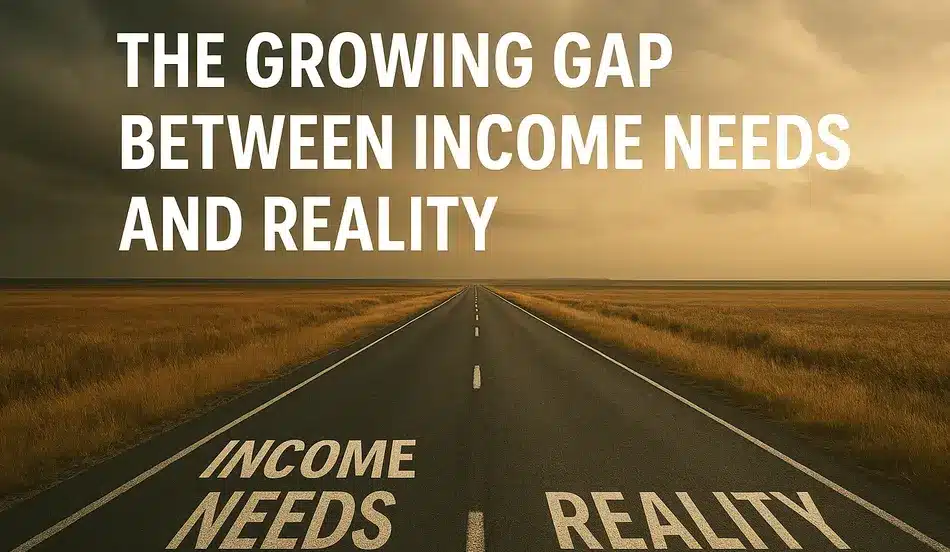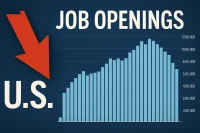The benchmark of a six-figure salary once represented the ultimate financial achievement for American workers. This magic number was the tipping point where you could finally build savings and spend based on wants rather than just needs. However, today’s economic reality has dramatically shifted what it takes to achieve financial security across the United States.
The Vanishing American Dream on $100,000
The American Dream traditionally meant economic security—paying your bills, putting food on the table, providing shelter for your family, and having additional savings. But according to recent analysis from GoBankingRates, a six-figure income no longer secures this lifestyle in any U.S. state.
Their research examined how much a family of four would need to:
- Own a home
- Own a car
- Have a pet
- Save 20% of their income
- Have 30% available for discretionary spending
The findings paint a sobering picture of today’s economic landscape.
The Growing Gap Between Income Needs and Reality
All 50 states now require more than $100,000 annual income to achieve the American Dream, with 38 states needing more than $140,000. Even in the most affordable states—Mississippi, Arkansas, and Kentucky—families need between $109,000 and $117,000 annually. Yet the median income for a household of four in these states ranges from just $71,000 to $87,000.

The disparity is even more dramatic in expensive states:
- Hawaii, California, and Massachusetts require annual incomes exceeding $240,000
- The median income in these states falls at least $94,000 short of what’s required for financial comfort
- Only about 3% of U.S. counties have a median income higher than the basic cost of living
“Unfortunately, wages haven’t kept up with the cost of living, by and large, for the last 50 years,” explains economic researcher Dr. Emily Sullivan from the Economic Policy Institute. “It becomes increasingly hard for many families to attain that middle-class lifestyle.”
Why Six Figures Doesn’t Stretch Like It Used To
Several key factors have contributed to the declining purchasing power of a six-figure salary:
Skyrocketing Housing Costs
Despite persistent desire for homeownership, the financial barriers have become nearly insurmountable for many:
- 62% of younger millennials and 63% of Gen Zers still consider homeownership part of the American Dream
- 66% of U.S. renters feel hopeless about ever owning a home due to rising prices
- 72% say they can’t afford the down payment
- A prospective homebuyer now needs nearly $110,000 in annual salary to afford a median-priced home
- The median household income in the U.S. is only about $75,000
Crushing Student Loan Debt
Student loan debt has reached an all-time high of $1.77 trillion in 2023, creating a ripple effect as entire generations begin adulthood with significant financial burdens.
- 52% of home buyers reported that student loan debt delayed their ability to save for a down payment
- The cost of college has outpaced overall inflation for decades
- Young professionals must allocate significant portions of their income to debt repayment rather than wealth building
Hiring? Find Top Financial Talent
Post jobs for free with WhatJobs and connect with qualified professionals seeking competitive compensation.
The Skills Gap Challenge
The changing economic landscape has created a significant skills mismatch in the American workforce:
Barriers to Higher-Paying Opportunities
In 2023, 42% of employees felt excluded from job opportunities due to lacking formal qualifications or experience. This creates a paradoxical situation where:
- Companies struggle to find qualified candidates for high-paying positions
- Workers can’t access the training needed to qualify for these roles
- 46% of companies plan to increase hiring in 2024 because current employees lack required skills
“The United States does not have a robust system to support the upskilling and training that workers need throughout their careers,” explains workforce development expert Robert Thompson. “While other OECD countries spend an average of 0.11% of GDP on worker training, the U.S. spends just 0.03%.”
The Shift to Skills-Based Hiring
There is hope on the horizon as more employers adopt skills-based hiring approaches:
- Major companies like IBM and Walmart have eliminated degree requirements for many positions
- 52% of U.S. job postings in January 2024 did not mention formal education requirements
- Companies implementing skills-based hiring report 89% higher employee retention
For job seekers looking to increase their earning potential, gaining practical experience through volunteer work, internships, or affordable online training programs can provide valuable skills that employers increasingly value over traditional credentials.
FAQs About Six-Figure Salary Requirements
Why is a six-figure salary no longer enough for financial comfort in America?
A six-figure salary falls short of providing financial comfort due to dramatic increases in housing costs, healthcare, education, and everyday expenses that have outpaced wage growth for decades. Analysis shows all 50 states now require more than $100,000 annually for a family of four to achieve basic financial security, with 38 states needing more than $140,000 for the traditional American Dream lifestyle.
How does geographic location impact whether a six-figure salary provides financial comfort?
Geographic location dramatically affects whether a six-figure salary provides financial comfort, with expensive states like Hawaii, California, and Massachusetts requiring over $240,000 annually for a family of four to maintain financial security. Meanwhile, even the most affordable states (Mississippi, Arkansas, Kentucky) require between $109,000-$117,000, demonstrating that a six-figure salary no longer guarantees comfort anywhere in America.
What strategies can workers use to increase their income beyond the six-figure salary threshold?
To surpass the six-figure salary threshold for true financial comfort, workers can strategically job-hop (which typically yields 5.9% annual increases versus 5.1% for those who stay put), invest in high-demand skills training, negotiate performance-based bonuses, develop passive income streams, and consider relocating to areas with better salary-to-cost-of-living ratios while maintaining remote work arrangements with higher-paying employers.
How has student loan debt impacted the value of a six-figure salary for younger Americans?
Student loan debt, which reached a record $1.77 trillion in 2023, has significantly diminished the value of a six-figure salary for younger Americans by forcing them to allocate substantial portions of their income to debt repayment rather than wealth-building. This financial burden delays major milestones like homeownership (52% report student loans delayed home buying) and retirement savings, effectively reducing the purchasing power and financial freedom that a six-figure salary once provided.




